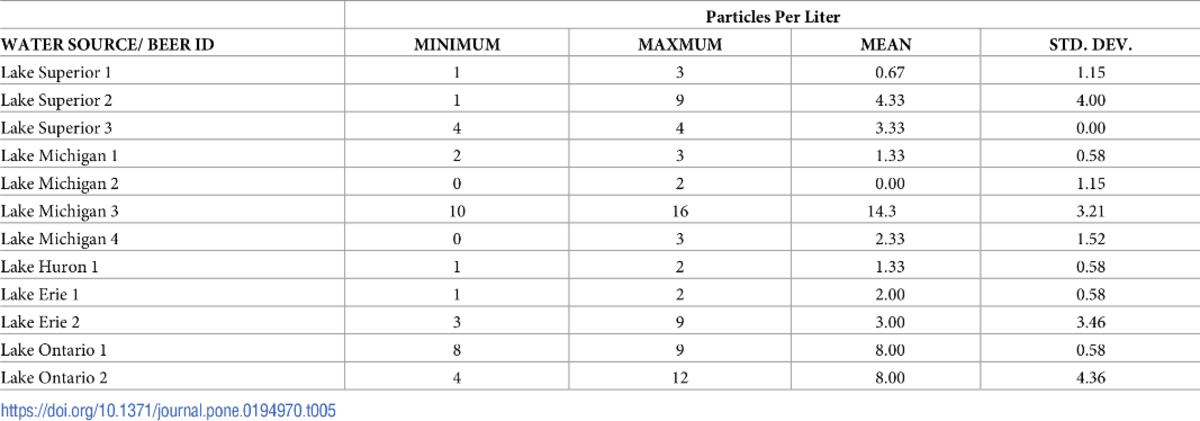Microplastics found in craft beers made with Lake Superior water
May 10, 2018 06:30AM ● By Editor
By Adam Uren from bringmethewnews.com - May 10, 2018
Craft beers made using water from Lake Superior were found to contain microplastics, according to a University of Minnesota study.
A small team of researchers tested the composition of 12 beers made using water from the five Great Lakes – including three from Lake Superior.
Seven brands of beer were bought from liquor stores in Minneapolis, two were growlers bought in Duluth, and the other three were picked up in Michigan and New York.
All 12 contained microplastics, which are defined as plastic particles of 0.1-5mm in length in the study published in the Public Library Science's journal.
Between the 12 beers, an average of 4.05 pieces of microplastic were found per liter, meaning someone drinking a beer a day would consume around 520 particles every year.
Two out of three of the Superior beers were below the average however, which was dragged up overall by a significant amount found in a single beer from Lake Michigan.
Microplastics were also found in Duluth tap water as part of the same study.
Bent Paddle says Superior water is safe
The beers involved in the study are not named, but the shores of the Great Lakes are populated by a number of craft breweries.
One of them, Bent Paddle Brewing, says it's unfortunate the Great Lakes have been targeted in a study of what is a worldwide problem.
Co-founder Colin Mullen told BMTN that Lake Superior's water "is some of the safest water in the world, and beer brewed from it is even safer."
"This issue is greater than a single water source and the communities that rely on them," he said. "Microplastics exist in the air we breathe, the food we eat and have been found in 94% of the US water supply which means they could be found in any product that uses water in its manufacture.
"This study and news release certainly draws attention to this deeper issue but unfortunately it targets a single region and specific industry to make its point.
"We should all be looking at ways to minimize our plastic use and disposal habits in our everyday life."
Microplastics are everywhere
There has been growing concern over the impact on human health of the tiny particles from clothing and plastic products that find their way into the human body through water sources.
While this particular Minnesota-based study focused on the Great Lakes, Mullen is not wrong that this is a global problem.
A study of drinking water supplies in 12 countries found 83 percent of it was polluted with microplastics, the Guardian reports, with America the highest with 94 percent.
As the U of M study notes, plastics are known to adsorb metals, bacteria, and chemicals from the environment, some of which can be toxic or carcinogenic.
The wider health implications of the widespread human ingestion of microplastics are not yet known, but researcher Mary Kosuth told KARE 11 she hopes the study will lead to more work uncovering how big of a health hazard it is.


